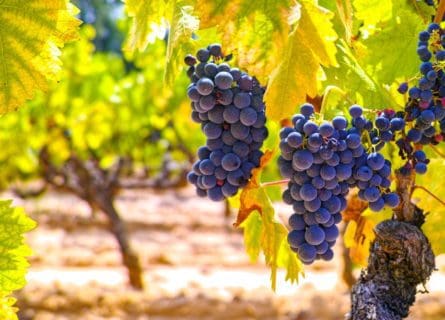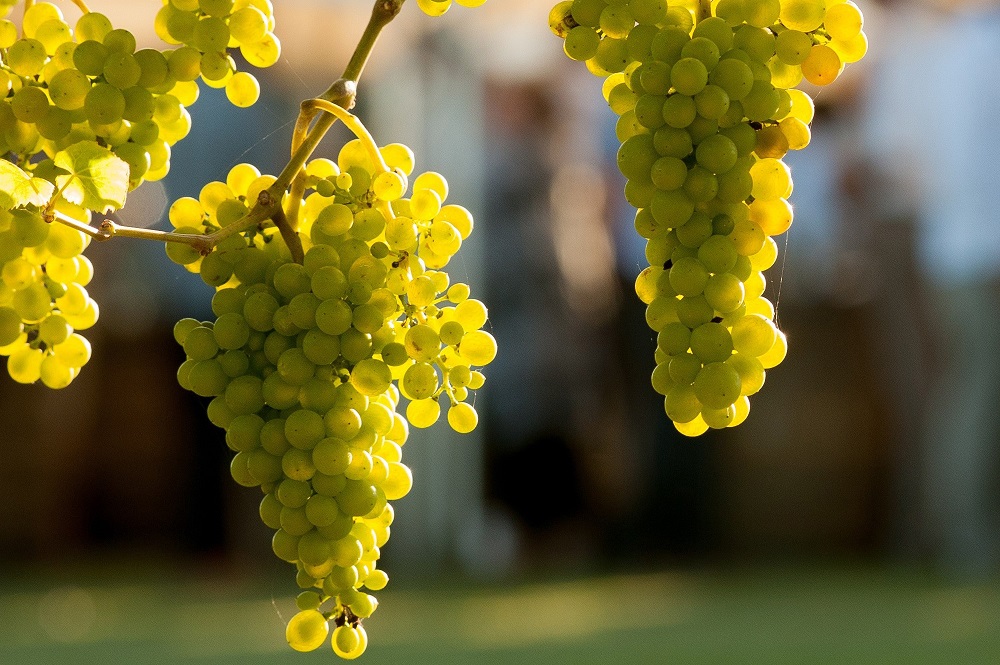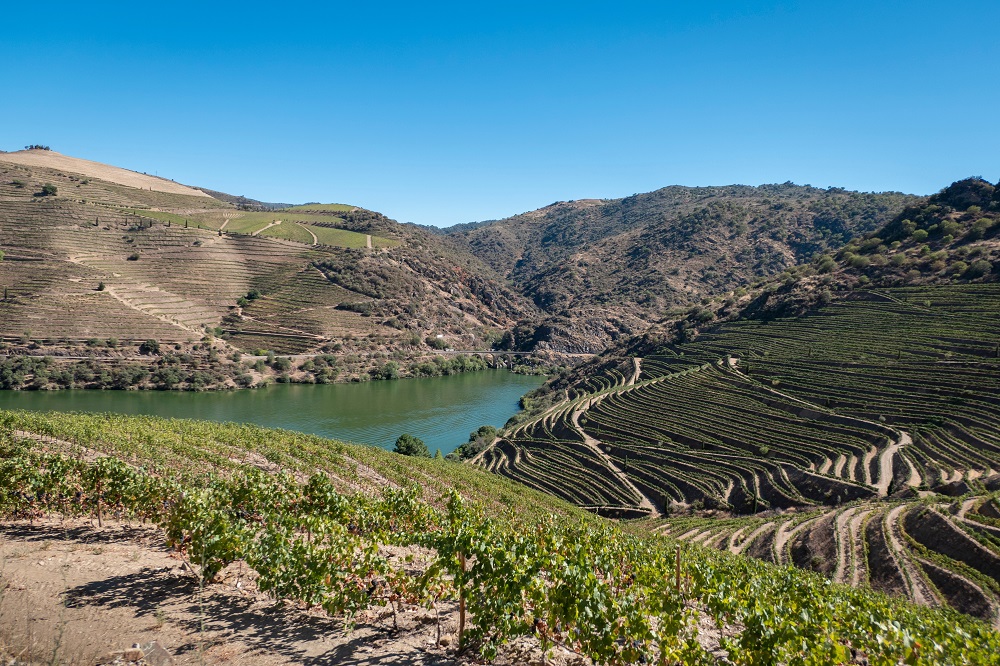
Mourvèdre Grape Variety: A Mover and Shaker
March 27, 2022
Mourvèdre is a red wine grape variety of mysterious origin that's grown around the world, including the Rhone and Provence regions of France.
By: James lawrence / Last updated: February 3, 2025
Estimated reading time: 8 minutes
In the 20th century, it seemed as if the quality revolution had bypassed the vineyards of northeastern Portugal. Remote and mountainous, Trás-os-Montes was forgotten as international hype coalesced around the Douro Valley, Alentejo, and the potent reds of Dão and Bairrada. As a result, very few wines, indeed premium labels, were sent abroad. Instead, Portugal’s ugly duckling remained unloved and ignored in equal measure.

Guide to Portuguese White Wine: Read more
But, as is often the case, a select group decided to turn things around in the early 2000s. As a result, trás-os-Montes wine quality has risen dramatically as the hold of the co-operatives has shrunk, and Portuguese investors have moved in. Another of Portugal’s unsung heroes, Vioshino, has played a key role in this move towards quality winemaking. Today, Trás-os-Montes makes some delectably fresh and elegant white wines, with Vioshino appearing in many of the finest blends. Like Riesling, it is a grape that brings acid, freshness, and beautiful aromatics to the party.
From the 11th century BC, the Iberian Peninsula’s coastal regions were colonized by eastern Mediterranean civilizations; the Phoenicians, Greeks, and Carthaginians all left their indelible mark on this fertile land. However, Celtic forces, such as the Lusitani, were also an important part of ancient history across the peninsula – the Celts mixed with native Iberian tribes, forming the Celtiberians. The sophisticated Lusitani were a formidable opponent for the Romans, who arrived in 218 BC to take possession of this diverse piece of real estate. Yet the Lusitani were not about to hand it over: they fought the invaders for many decades before they begrudgingly accepted Roman rule. Nevertheless, the Romans transformed the political and cultural framework of the peninsula, including the rapid proliferation of viticulture across Spain and Portugal. They also founded several strategically important settlements, including Porto.
Yet the fall of the Roman Empire in 476 AD changed everything. With an enticing power vacuum opening all over western Europe, several civilizations had their eye on the Iberian Peninsula. Invaders from the north, the Visigoths, established a capital in Toledo after they swept through France into Spain. Yet their situation was precarious due to weak political organization and internecine power struggles. As a result, the Visigoths were easily conquered and displaced by the Moors, who arrived from North Africa in 711. Their hold over the peninsula lasted for over six centuries, albeit certain parts of northern Spain – and Portugal – were never subject to Islamic rule. However, there is much to admire in the kingdom of Al Andalus, not least the Moor’s advancements in mathematics, medicine, geography, and astronomy! Indeed, by the late 800s, Al Andalus was one of the most prosperous civilizations in Western Europe.
In the 11th century, however, northern Christian kingdoms decided to reconquer territories lost to the Moors. A hundred years later, they marched triumphantly into Lisbon; Portugal was granted independence in 1139 by the Christian monarch Afonso Henriques. Meanwhile, the marriage of Fernando of Aragon and Isabel of Castile – the famous Catholic monarchs – led to political unity. They recaptured Granada, the last Moorish stronghold in Andalucia, in 1492. That same year, Columbus discovered the Americas, and Spanish and Portuguese explorers began colonizing the New World.
Thus began a period of intense rivalry between two major maritime powers. Henrique o Navegador (Henry the Navigator) was a ruler interested in expanding Portugal’s dominion over the wave; he founded a navigation school in the town of Sagres in the Algarve in the 1400s. At the end of that century, Vasco de Gama discovered India after his vessel sailed around the Cape of Good Hope. Although the Hindu ruler of Calicut was not impressed with de Gama’s initial gift of cloth, the expedition returned to Portugal with a valuable cargo of spices. De Gama subsequently established lucrative trade routes with the East Indies; the monarch Joao III nominated him Viceroy of India in 1524; however, Vasco de Gama died soon afterward. It signaled the end of Portugal’s golden age.
The loss of several colonies was the first major blow; Spain invaded in 1580 and controlled Portugal for 60 years. However, this great nation’s fortunes rebounded in the 17th century as gold flowed into the Portuguese treasury mined from Brazil. In the late 1700s, the Marques de Pombal chief minister began to modernize Portugal’s wine industry. Until then, it relied on outdated equipment and woefully inadequate viticultural methods. Yet Pombal helped to turn things around by encouraging growers to embrace techniques – such as training vines on trellises – adopted in France. Sadly, this prosperity did not last: Napoleon’s invasion in 1807 was compounded by the loss of Brazil in 1825.
By the end of the 19th century, Portugal was a shadow of its former self – bitterly divided and impoverished. That state of affairs would not change until 1974, when the bloodless Carnation Revolution saw democracy restored. Today, Portugal displays the self-confident attitude of a modern European state.
This transformation, of course, is keenly reflected in the prosperity that emanates from the country’s major wine-growing regions. A vital catalyst for Portugal’s quality revolution was joining the EU in 1986; agricultural regions qualified for generous development grants and funding. Yet investment was very slow to arrive in Trás-os-Montes, perhaps because it lacked the export potential of Alentejo and the Douro.
Nevertheless, the cogs started to turn in the 21st century. With indigenous varieties like Vioshino at their command, growers continue to fashion saline and aromatic whites that benefit from moderate alcohol due to the area’s range of cool mesoclimates. However, the early-ripening Viosinho prefers a warmer site (within reason) and is susceptible to rot in wet vintages. Thankfully, summers in Trás-os-Montes are usually very dry, so rot isn’t a significant issue. Nevertheless, some producers still regard Vioshino as a ‘difficult’ variety, as its yield is quite unreliable – in bad years, it can be paltry.
Despite the above, growers who elect to work with Vioshino are usually happy with their decision. Often found in mixed field blends, Vioshino can produce high-quality wine: full-bodied and perfumed, with ripe acid and aromas of white flowers, apricots, and lanolin. It has long been a vital component in white Port and table wines made in the Douro and Trás-os-Montes. However, single-varietal expressions are comparatively rare. For the most part, Vioshino is used to bring structure and fragrance to the dry whites of northern Portugal.
Therefore, the overwhelming objective is typically to protect the juice from oxidation, producing a very clean and fruity style of white. One of the most important stages is pressing the berries: fine white wines need a very pure must. This is achieved by harvesting the crop by hand, gently pressing grape bunches whole, and ensuring minimal contact between juice and skins. After the berries have been pressed, the must is often cooled before fermentation. The size and composition of the vessel are crucial here: stainless steel provides rigid temperature control and cleanliness. Cool vinification in steel, as ever, will be the preferred choice for most winemakers; oak, amphorae, and concrete are all occasionally used.

Yet the ultimate arbiter of quality, where Vioshino is concerned, is the blending stage. It takes great skill and experience to produce a wine that is better than the sum of its parts; Vioshino is often blended with Bical and Gouveio. The aim is to enhance the final product without one single grape dominating the flavor profile of the wine. Therefore, in the case of Vioshino, getting the percentages right is crucial.
Trás-os-Montes is one of the last great frontiers of Portuguese wine. Translated as “Behind the Mountains,” this corner of northeastern Portugal is brimming with potential, not least due to its exceptional terroir: free-draining granite and schist soils with some chalk. Moreover, its vineyards are mostly protected from the worst excesses of Atlantic weather by a chain of mountains that run through the zone. As a result, it is, in fact, one of the country’s driest regions.
Yet the area stagnated for many decades as investment flowed into the Douro further south. It is only relatively recently that the wines of Trás-os-Montes have been noticed – both at home and abroad. It is a very expansive zone, bordering Spain to the north and west, while the Douro River is found to the south. As a result, there is a rich mosaic of different climats (vineyard sites), although many of the best terroirs are south-facing, planted on the higher slopes of the Douro, Sabor, Tua, or Tamega rivers. In addition, there are four officially demarcated subregions: Chaves, Planalto Mirandès, Varos, and Valpaços. Each has something unique; the best white wines tend to be made in Planalto Mirandès and Varos.
But, as elsewhere, the most crucial growing factor is altitude. Trás-os-Montes is blessed with an abundance of very pretty, undulating vineyards, with significant variances in altitude between the low-lying sites and those higher up on the top slopes. In hot summers, growers take full advantage of site elevation to craft fresh and elegant whites, often containing a good dollop of Vioshino. Diurnal temperature variation (a significant temperature difference between day and night that helps preserve acidity in the grapes) is one-half of the quality equation. The other, of course, is this magnificent grape – perhaps Europe’s most underrated.
If you would like us to customize an exclusive luxury tour, contact us and let us know your travel plans. We offer luxury food and wine tours for private groups of a minimum two guests. In addition, all of our private, chauffeured tours are available year-round upon request.

